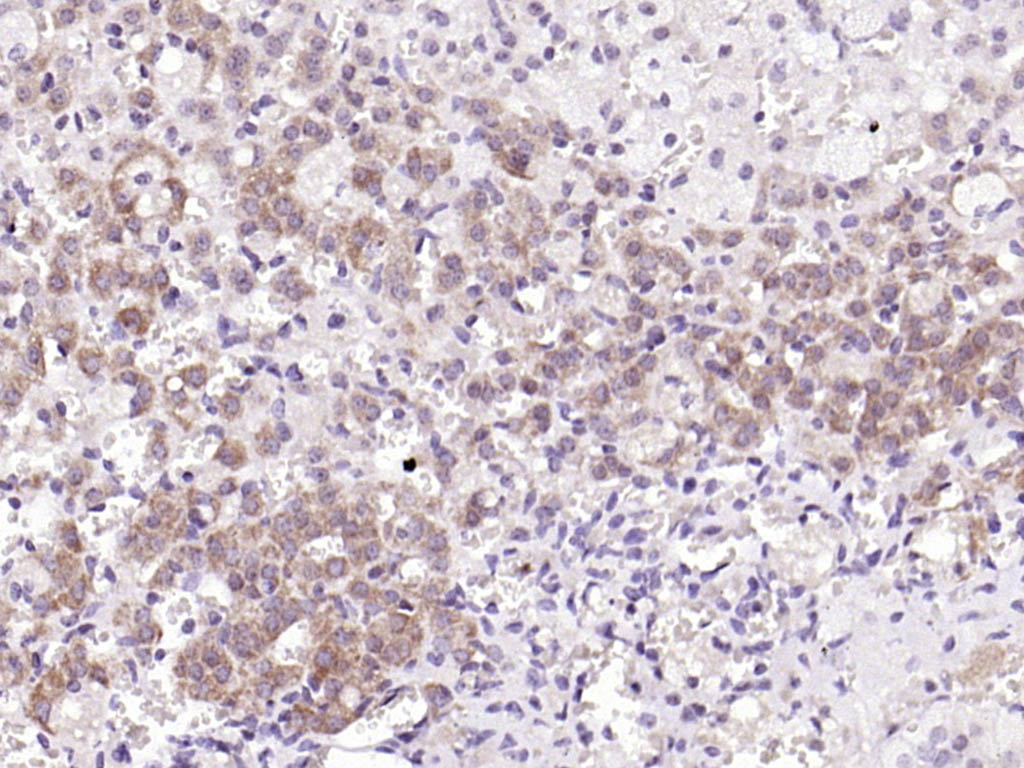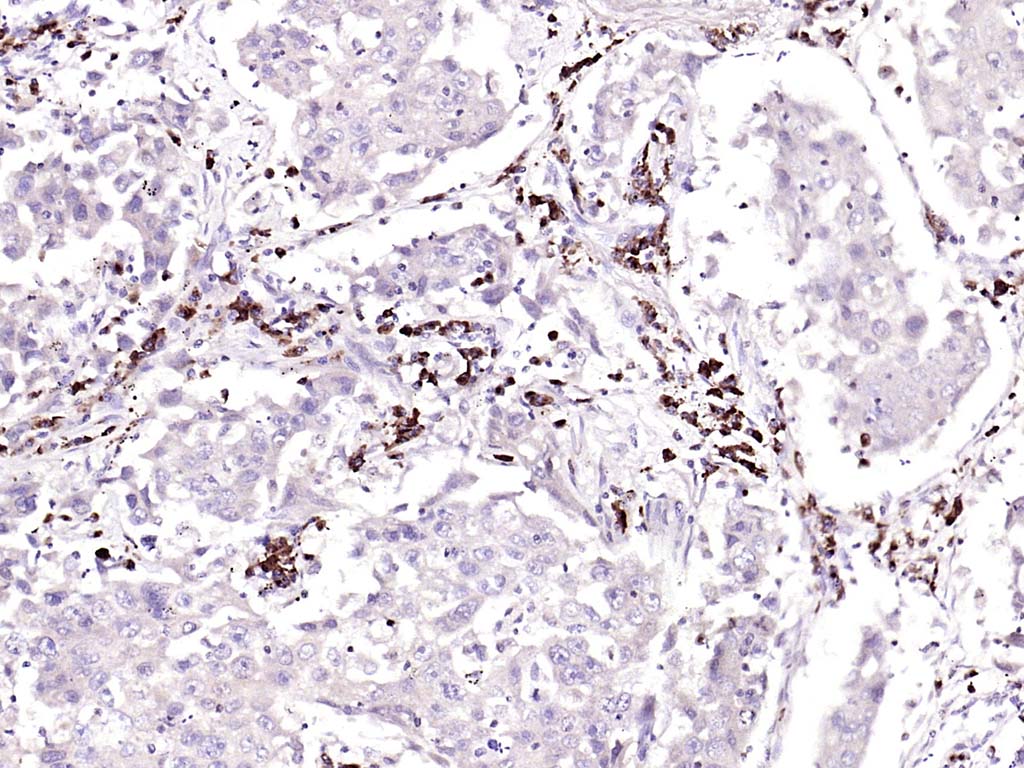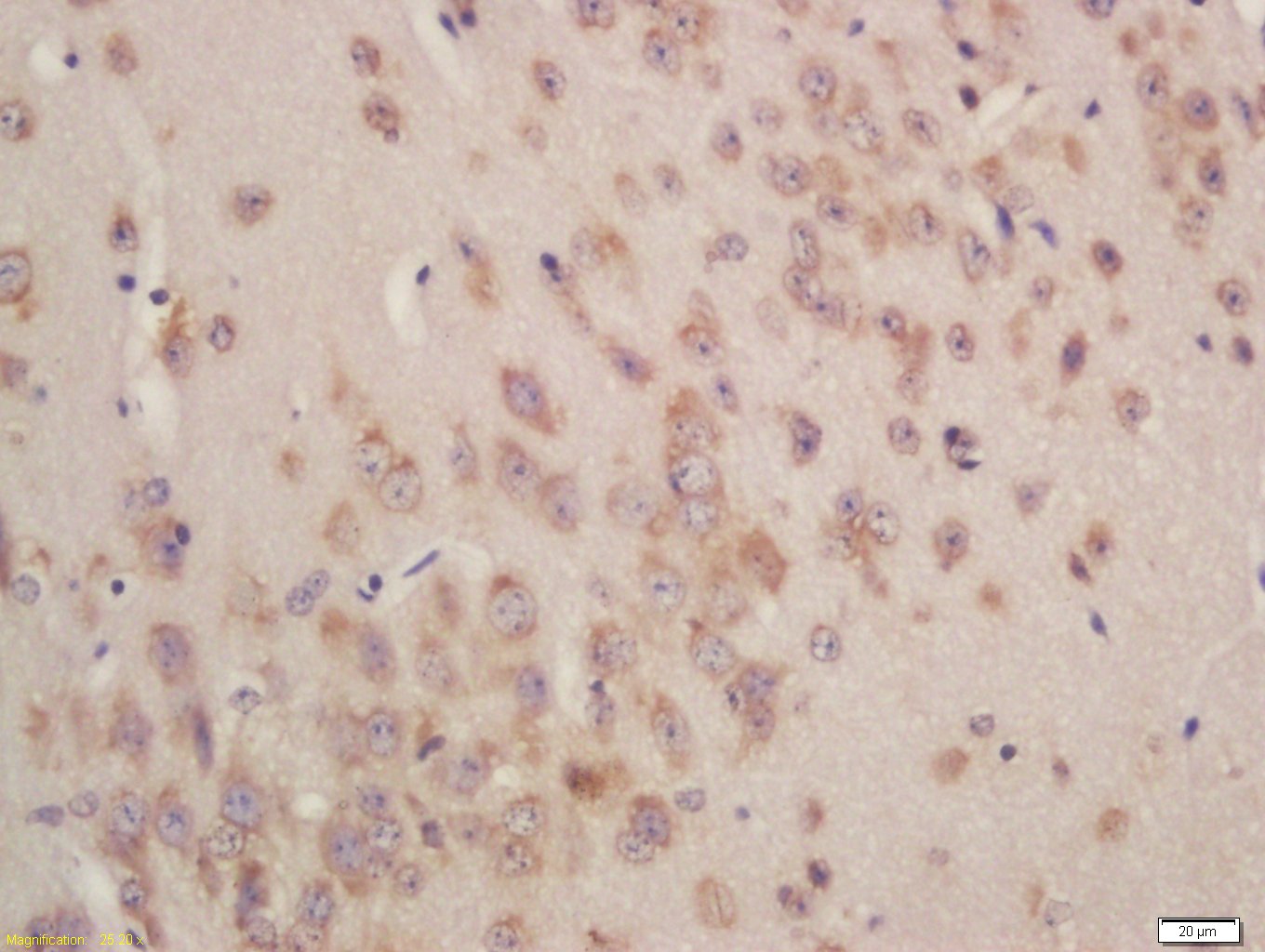
Rabbit Anti-GSTA3 antibody
Glutathione S alkyltransferase A3; Glutathione S aralkyltransferase A3; Glutathione S aryltransferase A3; Glutathione S transferase A3 3; Glutathione S transferase A3; Glutathione S transferase alpha 3; Glutathione transferase alpha 3; GST class alpha; GS
View History [Clear]
Details
Product Name GSTA3 Chinese Name 谷胱甘肽S转移酶A3抗体 Alias Glutathione S alkyltransferase A3; Glutathione S aralkyltransferase A3; Glutathione S aryltransferase A3; Glutathione S transferase A3 3; Glutathione S transferase A3; Glutathione S transferase alpha 3; Glutathione transferase alpha 3; GST class alpha; GST class alpha member 3; GSTA 3; GSTA3 3; GTA 3; GTA3; GTA-3; MGC22232; S (hydroxyalkyl)glutathione lyase A3; GSTA3_HUMAN. literatures Research Area Cell biology immunology Signal transduction transcriptional regulatory factor Kinases and Phosphatases Immunogen Species Rabbit Clonality Polyclonal React Species Human, Rat, (predicted: Mouse, Dog, Pig, Horse, Rabbit, Sheep, ) Applications ELISA=1:5000-10000 IHC-P=1:100-500 IHC-F=1:100-500 IF=1:100-500 (Paraffin sections need antigen repair)
not yet tested in other applications.
optimal dilutions/concentrations should be determined by the end user.Theoretical molecular weight 25kDa Cellular localization cytoplasmic Form Liquid Concentration 1mg/ml immunogen KLH conjugated synthetic peptide derived from human GSTA3: 131-222/222 Lsotype IgG Purification affinity purified by Protein A Buffer Solution 0.01M TBS(pH7.4) with 1% BSA, 0.03% Proclin300 and 50% Glycerol. Storage Shipped at 4℃. Store at -20 °C for one year. Avoid repeated freeze/thaw cycles. Attention This product as supplied is intended for research use only, not for use in human, therapeutic or diagnostic applications. PubMed PubMed Product Detail Cytosolic and membrane-bound forms of glutathione S-transferase are encoded by two distinct supergene families. These enzymes are involved in cellular defense against toxic, carcinogenic, and pharmacologically active electrophilic compounds. At present, eight distinct classes of the soluble cytoplasmic mammalian glutathione S-transferases have been identified: alpha, kappa, mu, omega, pi, sigma, theta and zeta. Glutathione S-transferase A3 (GSTA3) belongs to the alpha class genes that are located in a cluster mapped to chromosome 6. Genes of the alpha class are highly related and encode enzymes with glutathione peroxidase activity. However, during evolution, this alpha class gene diverged accumulating mutations in the active site that resulted in differences in substrate specificity and catalytic activity. GSTA3 catalyzes the double bond isomerization of precursors for progesterone and testosterone during the biosynthesis of steroid hormones.
Function:
Conjugation of reduced glutathione to a wide number ofexogenous and endogenous hydrophobic electrophiles. Catalyzesisomerization reactions that contribute to the biosynthesis ofsteroid hormones. Efficiently catalyze obligatory double-bondisomerizations of delta(5)-androstene-3,17-dione anddelta(5)-pregnene-3,20-dione, precursors to testosterone andprogesterone, respectively.
Subunit:
Homodimer.
Subcellular Location:
Cytoplasm.
Similarity:
Belongs to the GST superfamily. Alpha family.
Contains 1 GST C-terminal domain.
Contains 1 GST N-terminal domain.
SWISS:
Q16772
Gene ID:
2940
Database links:Entrez Gene: 2940 Human
Entrez Gene: 14859 Mouse
Omim: 605449 Human
SwissProt: Q16772 Human
SwissProt: P30115 Mouse
Unigene: 102484 Human
Unigene: 394593 Mouse
Unigene: 10460 Rat
Product Picture
Antigen retrieval: citrate buffer ( 0.01M, pH 6.0 ), Boiling bathing for 15min; Block endogenous peroxidase by 3% Hydrogen peroxide for 30min; Blocking buffer (normal goat serum,C-0005) at 37℃ for 20 min;
Incubation: Anti-GSTA3 Polyclonal Antibody, Unconjugated(SL5163R) 1:200, overnight at 4°C, followed by conjugation to the secondary antibody(SP-0023) and DAB(C-0010) staining
References (0)
No References
Bought notes(bought amounts latest0)
No one bought this product
User Comment(Total0User Comment Num)
- No comment





 +86 571 56623320
+86 571 56623320
 +86 18668110335
+86 18668110335

